In this article, ahead of this week's PTNOG meeting, we take a look at what our data tells us about Portugal in terms of membership development, IPv6 adoption and routing.
Registration Data
With 87 active LIRs on 1 December 2019, Portugal is one of the smaller countries in the RIPE NCC service region when it comes to membership (ranking fortieth by number of LIRs). Its neighbour, Spain, whose population is roughly five times that of Portugal, has sixteen times as many members, ten times as many IPv6 addresses and five times as many IPv4 addresses. To get a better idea how Portugal is doing, we compare it to countries with similar membership numbers in the European Union: Luxemburg, Greece, Slovenia and Croatia.
Looking at the evolution of the number of LIRs over the past 7 years in each of these countries, we see that although growth rates varied, all moved in roughly the same band, increasing by around thirty to sixty LIRs. Portugal is in the middle, with fifty extra LIRs compared to seven years ago.
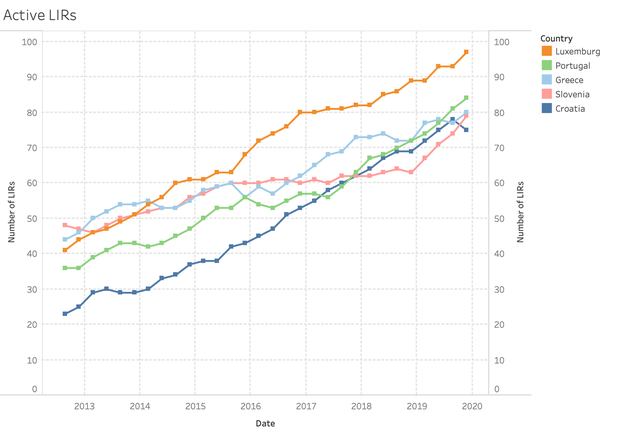
Figure 1: Number of LIRs over time
In terms of resources held, we see that Portugal and Greece have significantly more IPv4 addresses than the other three countries. For both IPv4 and IPv6, Portugal is first in this group, while for autonomous system numbers Slovenia leads over the others by a fair margin.
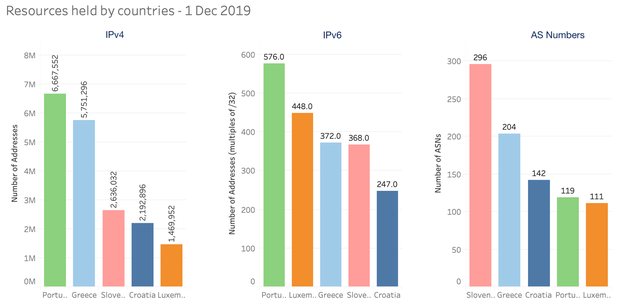
Figure 2: Number of IPv4, IPv6 and AS numbers held
IPv4 Transfers
When the RIPE NCC reached its last /8 of IPv4 in 2012, all new and existing LIRs could only receive one final allocation of 1,024 addresses. Organisations that needed more could only get these from the secondary IPv4 transfer market. Summing up all transfers made since then, we find 728,064 IPv4 addresses were transferred to Portugal, mostly to Vodafone, in two transactions; one with IP addresses coming from Romania, the other one with IP addresses from the USA. We also find 36,864 addresses transferred within the country and 87,296 addresses that left Portugal to a new home in one of ten other countries.
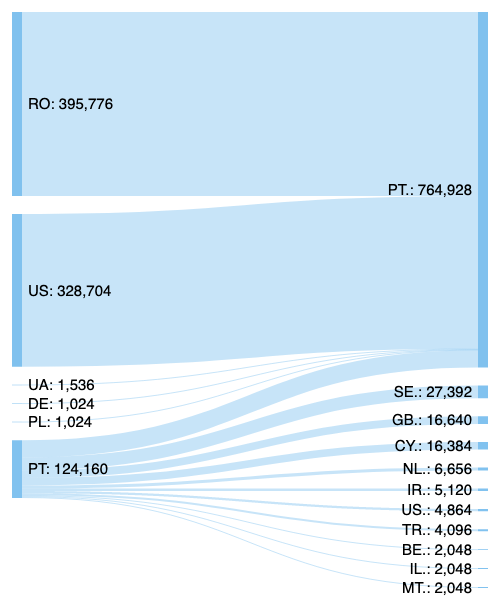
Figure 3: IPv4 transfer flows to/from/within Portugal
IPv6 Adoption
The 30-day average IPv6 capability metrics data compiled by our colleagues at APNIC places Portugal in eighth place for Europe. Portugal is therefore comparable with the United Kingdom, France, Luxembourg and Finland, although not as strong as Belgium, Greece and Germany. Drawing on a different methodology and different user base, Facebook measures slightly higher adoption rates, but arrive at the same top three countries. Portugal moves up one spot in this list, to seventh in Europe.
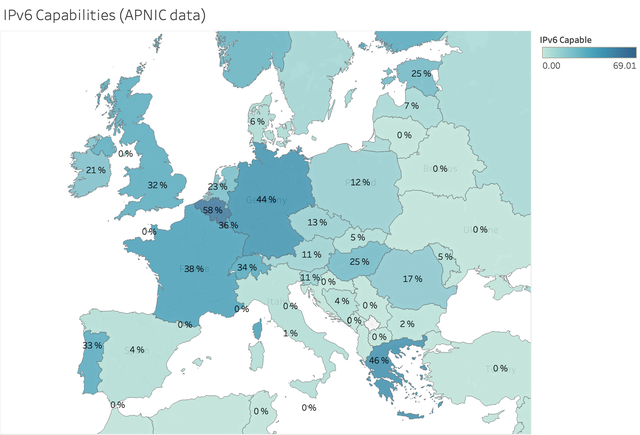
Figure 4: IPv6 capability (source: APNIC)
Routing Data
Locality of Traffic
To assess how efficiently traffic between ISPs in Portugal is routed, we look at the results of traceroute measurements between RIPE Atlas probes situated in distinct autonomous systems across Portugal. The matrices in Figure 5 (below) show the results, with colour codes indicating observations of IP addresses that are located abroad or are associated with local Internet Exchange Points (IXPs). In case of IPv4, we find the traceroutes all stay in the country and a good part traverse one of the local IXPs. For IPv6, we find two cases where the traceroutes passed through London and Paris. Both of these instances involved destination probes that use Hurricane Electric's tunnel broker service.
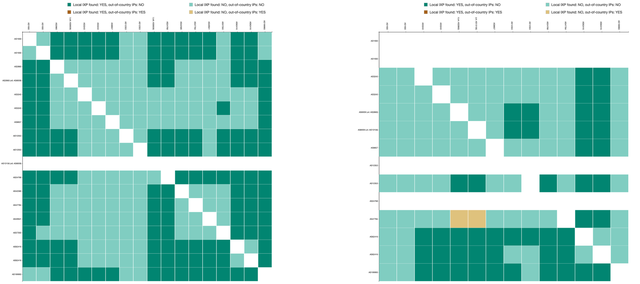
Figure 5: Classification of traceroute measurements between ASNs hosting a RIPE Atlas probe. Empty rows indicate cases where no results could be collected from the probe.
Reachability from Abroad
Installed at a number of locations around the world, the RIPE RIS route collectors allow us to take a peek at how Portuguese networks are reached from abroad, and to determine which are the dominant parties in routing traffic to Portugal. Although the routing tables themselves do not carry any geographic information, we can get a reasonably good feeling by mapping the observed prefixes and AS numbers to countries and selecting those that are located in Portugal.
Figure 6 shows the top 20 Portuguese ASNs which are seen as the entry point to Portuguese IPv4 networks in the AS paths collected by RIS in Sao Paulo, Brazil. The numbers in the graph count how many unique prefixes were passing through each AS. The sum of 730 for a total of 590 Portuguese prefixes indicates most of the RIS collector's peers observe the same ASNs as entry point for the same prefix. Although we cannot exclude the existence of back-up paths, this result suggests relatively low redundancy in international connectivity on the level of autonomous systems.
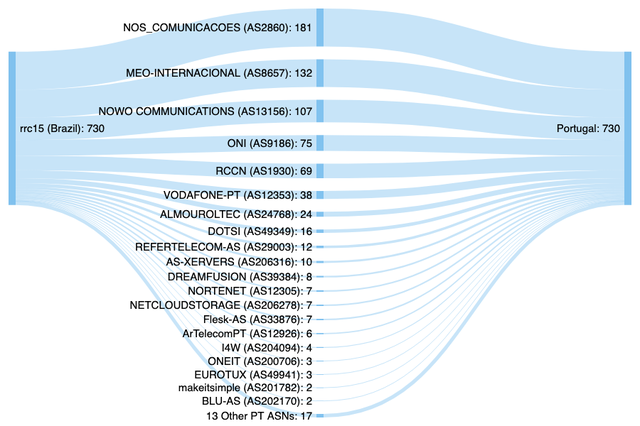
Figure 6: First Portuguese ASN seen in routes collected in Brazil
Figure 7 extends the analysis to include the last transit provider before reaching Portugese ASNs. Here the numbers indicate how often each pair of providers was seen in any of the AS paths collected in Brazil. We can see how both NOS and NOWO highly depend on Cogent and Tata Communications. MEO on the other hand appear to have more diverse upstream connectivity. Also, their presence in the left column indicates they are connected to at least one of the ASNs providing information to the RIS route collector in Brazil; either via direct peering or via an IXP where both are present.
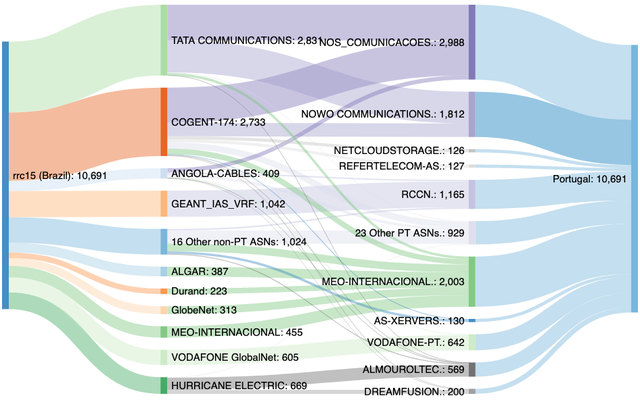
Figure 7: First Portuguese ASNs and their transit providers
DNS - K-root Server Anycast Instances
RIPE NCC operates k.root-servers.net, one of the 13 Internet root name servers. Using IPv4 and IPv6 anycast, the K-root service is provided by a set of distributed nodes. Five of these, located in Amsterdam, Frankfurt, London, Miami and Tokyo, are core nodes, the BGP announcements of which we expect to propagate widely. The others are smaller, hosted nodes where the hosting organisation is in charge of connectivity to the Internet. Typically, these have a more local reach. The exact location chosen by individual users' DNS resolvers will depend on how the prefixes are announced by the k-root hosts and the BGP peering policies and path selection of each user's ISP.
With RIPE Atlas we measure which k-root instances are reached from various locations in the world. For Portugal we find that, in 2019, London, Lyon, Amsterdam, Geneva and Gdynia were most often used. Instances in geographically closer Madrid and Barcelona were either not available or discarded in the BGP selection process (for example, because of longer AS paths to these locations).
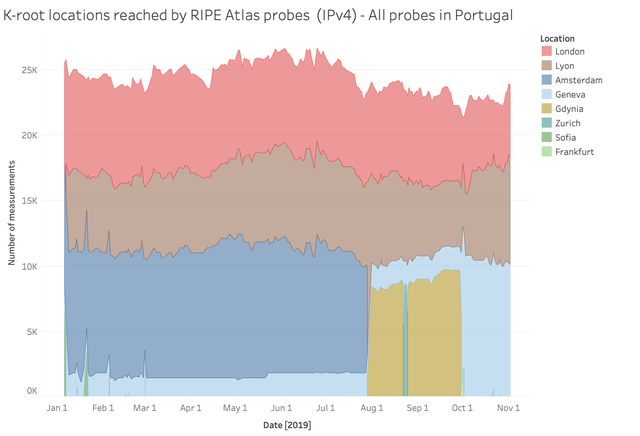
Figure 8: K-root instances used by Portuguese Atlas probes in 2019
Plotting all results from probes in the Iberian peninsula, the Azores and the Canary islands on a map, we see a significant number of Spanish probes reaching the k-root instance in Salvador, Brazil. Having to cross the Atlantic twice leads to high round trip times for these probes; the minima we observe are all above 200ms. However, although this is sub optimal, the impact on end users is unlikely to be large: chances are the local resolvers will use one of the other 12 root name servers with a better response time. In addition, even when the resolver would use the K root server, caching in the resolver will limit the number of times it needs to reach out to the authoritative server.
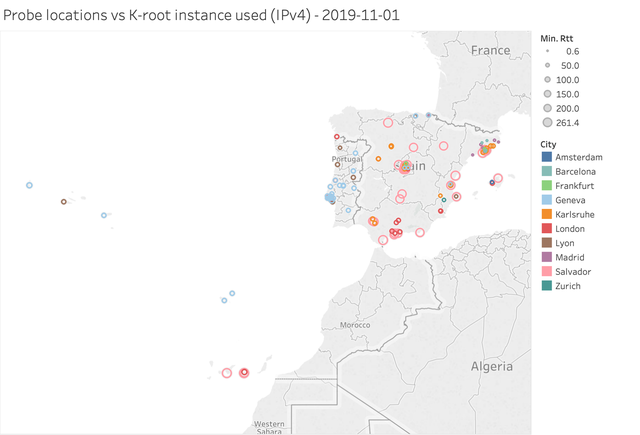
Figure 9: K-root instances by probe location. The size of the circles is proportional to the round trip time
Feedback
We hope that this overview of the current state of the Internet in Portugal as seen from the perspective of the RIPE NCC is of use, particularly to Portuguese network operators. We would like to hear from you about what data and analysis you find the most interesting and useful, so please leave any comments or questions below.

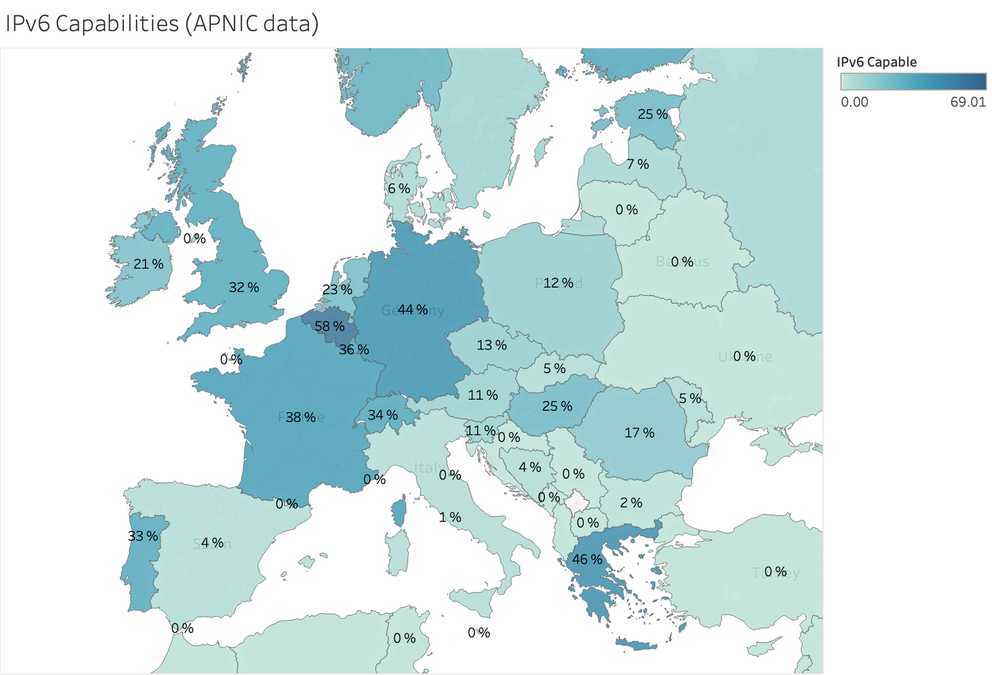
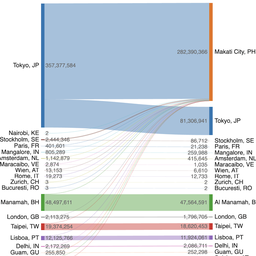
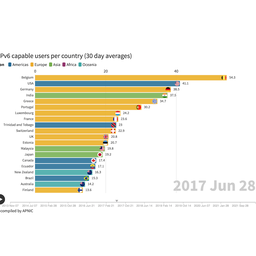

Comments 0
The comments section is closed for articles published more than a year ago. If you'd like to inform us of any issues, please contact us.